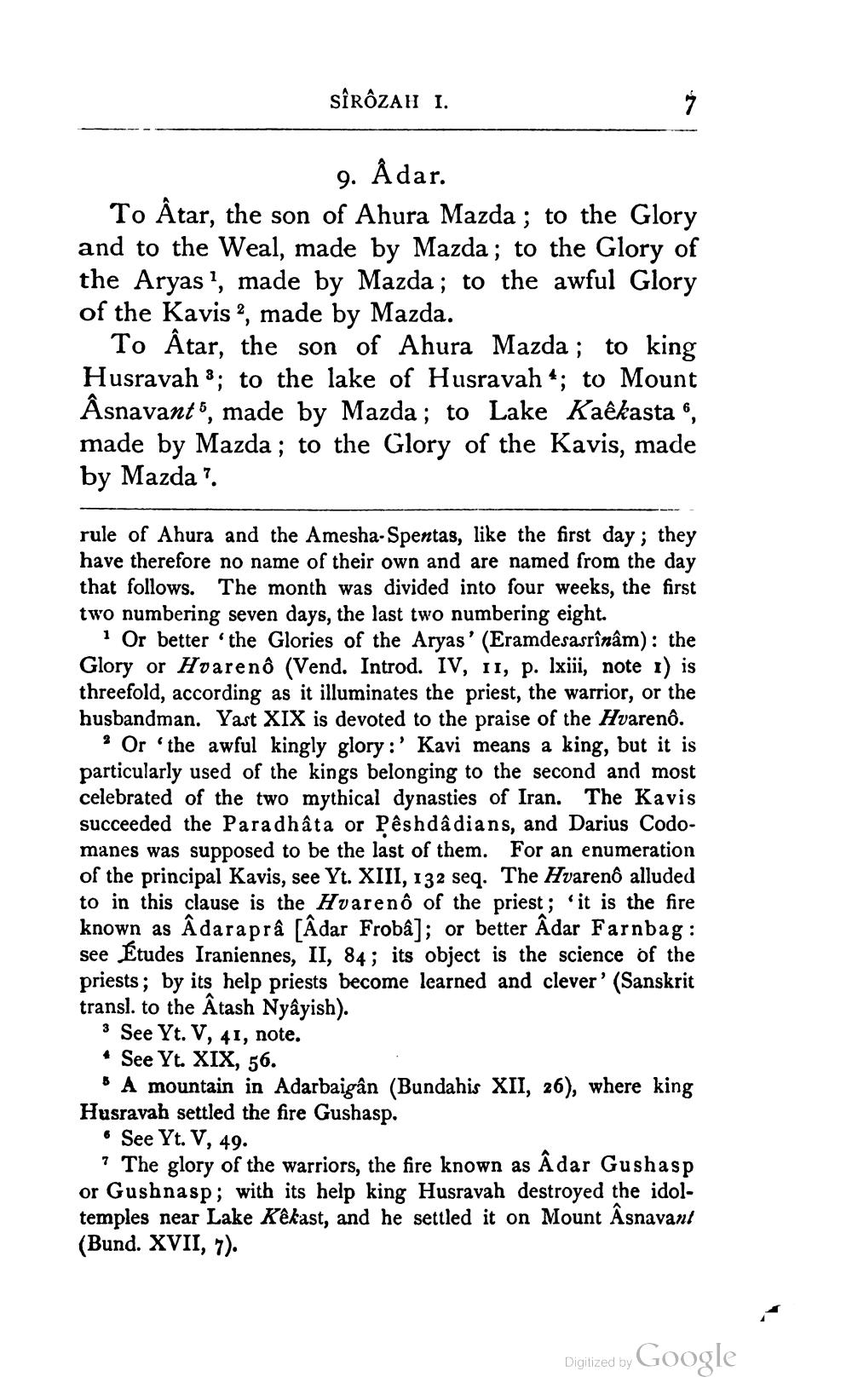________________
SÎRÔZAH I.
9. Âdar.
To Âtar, the son of Ahura Mazda; to the Glory and to the Weal, made by Mazda; to the Glory of the Aryas1, made by Mazda; to the awful Glory of the Kavis 2, made by Mazda.
To Âtar, the son of Ahura Mazda; to king Husravah; to the lake of Husravah; to Mount Âsnavant, made by Mazda; to Lake Kaêkastao, made by Mazda; to the Glory of the Kavis, made by Mazda'.
rule of Ahura and the Amesha-Spentas, like the first day; they have therefore no name of their own and are named from the day that follows. The month was divided into four weeks, the first two numbering seven days, the last two numbering eight.
1 Or better the Glories of the Aryas' (Eramdesasrînâm): the Glory or Hvarenô (Vend. Introd. IV, 11, p. lxiii, note 1) is threefold, according as it illuminates the priest, the warrior, or the husbandman. Yast XIX is devoted to the praise of the Hvarenô.
2 Or 'the awful kingly glory:' Kavi means a king, but it is particularly used of the kings belonging to the second and most celebrated of the two mythical dynasties of Iran. The Kavis succeeded the Paradhâta or Pêshdâdians, and Darius Codomanes was supposed to be the last of them. For an enumeration of the principal Kavis, see Yt. XIII, 132 seq. The Hvarenô alluded to in this clause is the Hvarenô of the priest; 'it is the fire known as Âdaraprâ [Âdar Frobâ]; or better Âdar Farnbag: see Études Iraniennes, II, 84; its object is the science of the priests; by its help priests become learned and clever' (Sanskrit transl. to the Âtash Nyâyish).
3 See Yt. V, 41, note.
* See Yt. XIX, 56.
A mountain in Adarbaigân (Bundahis XII, 26), where king Husravah settled the fire Gushasp.
• See Yt. V, 49.
7 The glory of the warriors, the fire known as Âdar Gushasp or Gushnasp; with its help king Husravah destroyed the idoltemples near Lake Kêkast, and he settled it on Mount Asnavant (Bund. XVII, 7).
Digitized by Google




